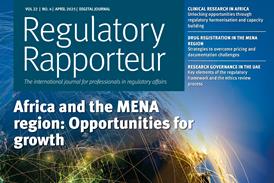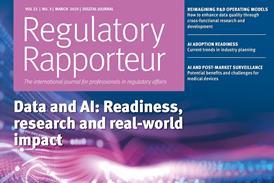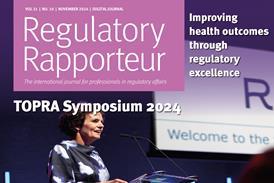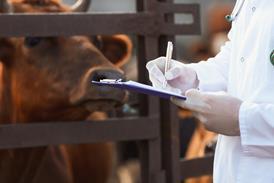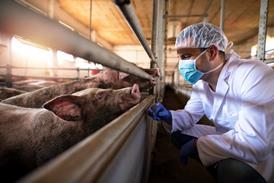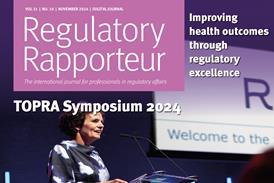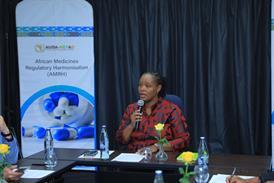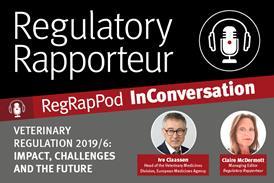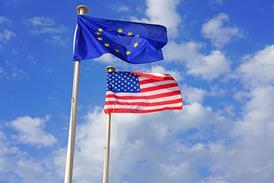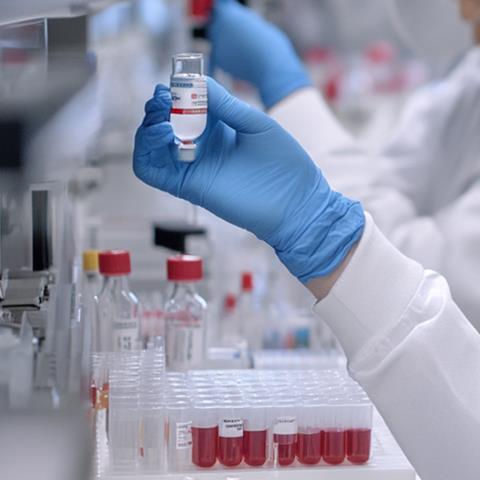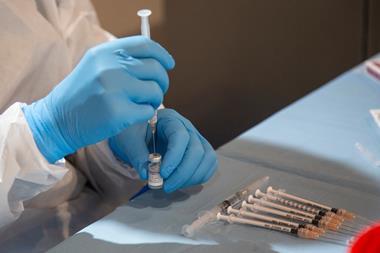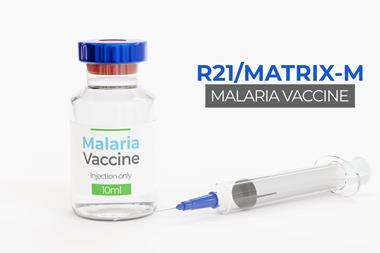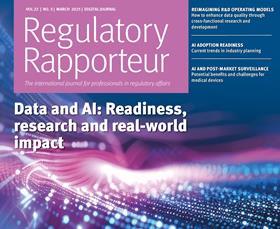
Regulatory Rapporteur
March 2025 | Vol. 22 | No. 3
Part 2: Immune correlates of protection, immunobridging, clinical effectiveness trials and the impact of population diversity
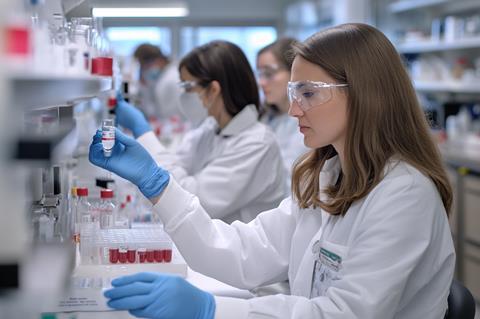
Abstract
Part 1 of this series explored the elements of the immune response that are important to vaccine effectiveness. Part 2 looks at how understanding the immune response supports prediction of vaccine effectiveness and can optimise clinical development of vaccines. The article then goes on to look at the impact of population diversity on vaccine response.
Issues discussed include establishing immune correlates of protection (ICPs) to link antibody responses with protection against infection. The potential to apply immunobridging may permit extrapolation of vaccine effectiveness across age groups or in lieu of effectiveness studies where these are not feasible.
The design and requirements for safety and effectiveness studies, including the potential need for large sample sizes and long-term follow-up is discussed.
Finally, the impact of various factors on vaccine response is explored, including prior exposure to infection, ethnicity, gender and age.
In conclusion, the value of applying immunological knowledge to streamline vaccine development, tailor vaccines to diverse populations, and enhance our ability to combat infectious diseases is underscored.
Introduction
The clinical development of vaccines, like all medicinal products, follows a logical sequential programme, starting with small exploratory Phase 1 studies, typically beginning with dose escalation. The inclusion of multiple exploratory endpoints can help to predict the potential therapeutic value of a vaccine early in its development. The European Medicines Agency (EMA) scientific guideline on ‘Clinical evaluation of new vaccines’ (to be referred to henceforth as the ‘EMA scientific guideline’) recommends including secondary endpoint aspects such as the induction of immune memory, cross-reactive antibodies, cross-priming (for example, the induction of immune memory to a different antigen), cell-mediated immunity, the correlation between cytokine or gene expression profiles, and an immune correlate of protection.[1]
In some circumstances, application and development of immune correlates of protection can supplant the need for large efficacy trials. In other circumstances, immunobridging can be applied; these options are discussed below. Nevertheless, often large Phase 3 efficacy and safety trials are needed along with studies in different age groups, ethnicities and geographies. Optimising such a programme is discussed in an earlier article.[2]
Immune correlates of protection
Much work has been invested in establishing immune correlates of protection (ICP), linking the level and nature of the antibody response that correlates with protection against infection. The EMA scientific guideline defines an ICP as the ‘type and amount of immunological response that correlates with vaccine-induced protection against an infectious disease and that is considered predictive of clinical efficacy’.[1]
Widely accepted ICPs exist for a range of infectious diseases and can support the extrapolation of results from prior efficacy studies. While there are circumstances where ICPs are relatively easy to establish, such as when protection is fully reliant on neutralisation (for example, against anti-capsular antigens or anti-toxins), this is often less feasible. Hepatitis B is an example of where an ICP has been successfully applied, with an antibody titre of 10mIU/ml being widely accepted as a predictor of effectiveness, and used to support marketing approvals of vaccines against this disease.
In the case of pneumococcal vaccination neutralisation, assays are applied to support the assessment of efficacy. The target strain is incubated with complement and neutrophils added to serum containing antibodies derived from vaccinated individuals, which results in their phagocytosis, a process known as opsonisation. Cells that survive opsonisation can then be grown in culture and quantified by plate count or flow cytometry. Viral or pseudo-virus neutralisation assays are also useful but are more complex to perform. It is critical that whatever assay is applied is appropriately validated and, where available, international reference standards are used. Measurement of functional antibody (for example, neutralising antibody, bactericidal activity or opsonophagocytic activity) and/or binding antibody (for example, total binding IgG, IgA or Ig subclasses) is recommended in the EMA scientific guideline.[1]
In the case of influenza, the EMA scientific guidance on the clinical data needed to support the licensure of seasonal inactivated influenza vaccines defines seroconversion in terms of hemagglutination inhibition (HI), which is the inhibition of viral antigen-induced clumping of red blood cells. Formerly, for inactivated influenza vaccines containing the viral hemagglutinin antigen, the percentage of subjects with either a pre-vaccination HI titre of less than 1:10 and a post-vaccination hemagglutinin inhibition HI titre greater than 1:40, or a pre-vaccination HI titre greater than 1:10 and a minimum four-fold rise in post-vaccination HI antibody titre, were considered protective.[3] However, that level is protective only at 50-70%, which makes this a relative rather than an absolute correlate of protection. As this can vary further with an emergence of new strains,[4] there remains a need to better define correlates of protection against influenza.
In view of the number of samples that need to be evaluated for levels of neutralising antibodies in a vaccine trial, the simpler the assay used, the better. Enzyme-Linked Immunosorbent Assay (ELISA) is often the method of choice and results are presented as international units or, otherwise, the number of dilutions needed to eliminate a positive signal. However, neutralising antibody titres are not always an adequate reflection of vaccine effectiveness and neutralisation assays may provide more relevant data. For example, in the case of the meningococcal vaccine, only a bactericidal and not an ELISA assay provides results that correlate well with protection.
Immunobridging
Extrapolation of an ICP is not always feasible as this may vary from one age group, gender or major histocompatibility complex (MHC) group to another. Evolution of an infectious agent with the development of different strains over time may also impact the ICP. Additionally, ICPs cannot always be reliably applied from one vaccine platform to another. As discussed in Part 1 of this series, vaccination effectiveness can vary in terms of how the antigen is presented to the immune system, which can be impacted by type of vaccine, formulation and its route of administration. In these circumstances, it may be possible to infer vaccine efficacy if non-inferiority in terms of immune response can be shown, compared to an authorised vaccine for which efficacy is known; this is termed as an immunobridging strategy.
Vaccine efficacy trials are sometimes not feasible, such as when the target infection is rare, or outbreaks are unpredictable and short-lived (for example, some viral haemorrhagic fevers). In these circumstances, immunobridging may offer the only way of demonstrating vaccine effectiveness.[1] Such an approach has been considered for the development of a vaccine against the Chikungunya virus (CHIKV) by the US Food and Drug Administration (FDA) and the Vaccines and Related Biological Advisory Committee (VRBPACI) in 2019 as outbreaks caused by Chikungunya are unpredictable, making it impractical to conduct a clinical effectiveness study. The FDA and the VRBPAC agreed that a CHIKV neutralising antibody titre that is reasonably likely to predict protection could be established from passive transfer of human antibodies to non-human primates followed by challenge with wild-type CHIKV.[5]
Considerations for later phase studies
The mechanisms by which vaccines exert a protective effect often extend far beyond the generation of neutralising antibodies. The type of antibody (for example, IgG or IgA), the duration of immune response, the role of memory cells and the T-cell response all play a significant role in protection. In some cases, neutralising antibodies may be of no relevance to protection; for example, it is generally believed that rather than antibodies, cellular immunity induced by Mycobacterium bovis (BCG) is the protective function against tuberculosis.[6]
In the case of rotavirus vaccination, a more complex picture emerges with respect to a definition of the immunity correlate of protection, as it seems that neutralising antibodies, non-neutralising antibodies, secretory antibodies and cellular immune responses all may play a role, depending on the situation.[6] In the case of SARS CoV2, while the focus has been on neutralising antibody titre, immune memory and cellular immunity are also reported to be of importance. Memory response is also particularly important where there are long incubation periods, such as for hepatitis.[4] It is, therefore, clear that immune correlates and immunobridging may not be sufficient to confirm vaccine clinical effectiveness.
In some circumstances, human challenge studies are useful when an infection is expected to be relatively mild or treatable. Such studies have been conducted on influenza, respiratory syncytial virus (RSV) infection, malaria and recently COVID-19, but these studies also have their limitations in that only a limited number of subjects can be studied, and the experimental model may not replicate real-world conditions.
Safety and effectiveness studies
Ultimately, Phase 3 vaccine efficacy and safety trials are usually needed and may require very large sample sizes (upward of 10,000 participants), in which case a single pivotal trial may be acceptable if compliant with regulatory guidelines.[7] The actual number of subjects needed to demonstrate vaccine effectiveness will depend on both the virus attack rate and the expected level of protection provided by the vaccine. It is evident that, in the case of clinical efficacy trials for vaccination against a rare infection, trial sizes would become unmanageably large and immunobridging or use of a nonclinical model as discussed above may represent the only possible approaches, but these options would need to be agreed with key regulatory agencies.
While large clinical trials are not always needed to demonstrate clinical effectiveness, adequate safety data will always be required. Vaccine programmes are usually designed to detect adverse events with an incidence greater than between 1/100 and 1/1000 vaccinated persons, requiring a minimum of 3,000 participants exposed to the vaccine.[8] In general, it would usually be expected that at least some safety data are available from all target groups for which the use of the vaccine is approved (for example, age sub-groups) and a minimum number of participants within a certain age range or with specific host characteristics may be required to be exposed.[1] Late-occurring adverse events are very rare, but cannot be discounted, and it is important to monitor for these during long-term follow-up, over a period of at least 12 months. During long-term follow-up, it may be acceptable that only serious adverse events and adverse events of special interest are captured. The duration of safety follow-up will be based on a number of factors, including the nature of the candidate vaccine, the choice of adjuvant and prior knowledge.
There are rare specific cases where vaccines, instead of protecting against infection, may exacerbate the illness. Antibody-dependent enhancement (ADE) of disease is a mechanism that facilitates viral entry into host cells and has been reported following prior infection with several viruses including dengue, Ebola and HIV.[9] In fact, the currently approved dengue vaccine is indicated only for individuals with test-confirmed previous dengue infection, as those who have not been previously infected by dengue virus were found to have increased risk of hospitalisation and clinically severe disease during the long-term follow up of the clinical studies. Another mechanism by which vaccines might give rise to exacerbation of disease is a process known as enhanced respiratory disease exacerbation (ERD), as discussed in Part 1 of this article.[10]
Clearly, the potential for vaccines to enhance rather than protect against infection through the two mechanisms of ADE and ERD highlights the need for studies in animal models, where feasible, before commencing clinical trials and for long-term follow-up after completion of the clinical trial.
An increased understanding is revealing how immune responses to vaccination individually differ and how antibody titre responses do not correlate with specific genetic or phenotypic responses. Instead, these responses correlate with an integration of an array of factors, including distribution of the target infection and its variants, prior exposure and vaccination, ethnicity, nutritional status, overall health of the population and social customs.[11] Age also has a profound effect on vaccination response with infants, children and older adults requiring special consideration.
Prior exposure to infection
Information on prior exposure to the target infection is important, as the vaccinated participant would likely be already immune. However, in some cases, the reverse may be true, as is the case with ADE linked with dengue infection. This has also been observed with other related Flaviviruses such as Zika, and potentially with other viruses as well, and occurs when sub-neutralising antibodies facilitate cellular entry via fragment crystallisable gamma receptors (FcγR) on monocytes, dendritic cells and macrophages.[12]
Immunological imprinting due to exposure to a related strain may reduce the effectiveness of the vaccine, such as has been reported for influenza. In a study reported by Riese et. al., non-responders to an influenza vaccination had received more frequent prior vaccinations compared to responders.[11] This is observed to be in line with a meta-analysis that showed that repeated vaccination attenuates vaccine effectiveness.[13][14] Vaccination history is therefore an important stratification consideration when designing clinical trials.[1]
The impact of ethnicity and gender
Genetic effects, for example, arising from HLA type, also impact vaccination response. The ChAdOx1 nCov-19 vaccine efficacy trial in the UK indicated an association between MHC class II and antibody responses against the SARS-CoV-2 spike protein 28 days post-first vaccination. Subjects expressing HLA-DQB1*06 alleles were more responsive and less likely to experience PCR-confirmed breakthrough infection.[15]
IgG1 allotypes have also been associated with response to vaccination. Currently, four human IgG1allotypes have been identified and their population distribution differs amongst ethnic groups and different allotype distributions have been noted to impact response in a recent Phase I HIV vaccine trial.[16][17][18][19][20]
Gender also impacts vaccine response. In general, females elicit a more robust antibody response but also suffer more adverse effects following vaccinations, such as against influenza, BCG, MMR and yellow fever.[21] This appears to be associated with the fact that testosterone dampens immune responses, whereas estradiol can stimulate antibody production. However, as estradiol levels decline with age, this difference is likely diminished in older adults.[11]
Paediatric vaccine development
Several factors impact vaccine response in children, such as maturity of their immune system, the blunting of a vaccination response by maternal antibodies, interaction with other vaccines and the potential for exposure to the pathogen. Preterm infants have an underdeveloped immune system and require special consideration.[22]
T-cell responses in early life are limited due to differences favouring innate over-adaptive memory responses, immunotolerance, and a high proportion of naïve and regulatory T-cells. Consequently, neonatal immunisations often give weak antibody responses with reduced durability. The humoral response matures gradually with an IgM response initially predominating and IgG and IgA production remaining limited until six months of age. Due to the limitations of generating antibody responses in early life, neonates rely heavily on passive maternal antibody transfer and maternal vaccination can be used to protect the neonate. Maternal IgG persists in infant circulation for months postnatally and is supplemented during breast-feeding with secretory IgA (sIgA) and some IgG contained in breast milk. Despite the limited antibody responses in early life to many pathogens, term infants and young children can mount robust antibody responses to some pathogens, such as RSV infections.[16]
Overall, when young infants are vaccinated, antibody levels fall to very low or undetectable levels six to nine months after the first dose in most cases. Therefore, with a few exceptions (such as BCG and hepatitis B vaccines), most paediatric vaccines are administered after two months of age in a series of booster doses (rotavirus, DTaP, Hib, pneumococcal, polio, seasonal influenza, measles, mumps, and rubella, varicella vaccine and hepatitis). The infant immune response can be improved by choice of adjuvant; for example, for an HIV vaccine, the oil-in-water emulsion adjuvant (MF59) yields a better response in children than in adults given the same vaccine, despite similar responses between adults and infants when the alum-adjuvanted vaccine is given.[22]
Older adults
Vaccine-non-responsiveness amongst older adults is well known. Higher frequencies of senescent T-cells commonly correlate with reduced vaccine efficacy in studies where immune function in elderly and young adults has been compared. Co-morbidities (for example, diabetes mellitus, chronic kidney disease, liver disease, obesity/metabolic dysfunction, heart or lung diseases) can also affect responsiveness to vaccination.[11]
Immunological imprinting also appears to be a major driving force for reduced antibody responses against drifted or new viruses or vaccine antigens. In this regard, infections such as influenza encountered in childhood permanently shape responses, thereby affecting the outcome of vaccinations later in life. Consequently, all vaccinations later in life are indeed booster vaccinations and must be assessed accordingly.[11]
Our expanding understanding of the immune response to vaccines based on immunologic and genetic data facilitates a better understanding of vaccine effectiveness. Riese et al., studied subjects of 65 years of age or older who were administered an adjuvanted trivalent influenza vaccine. By application of a combination of serology, multi-parametric flow cytometry, multiplex and transcriptome analysis, they were able to identify differences in T-cell responses between responders and non-responders, with the former having a higher proportion of T follicular helper cells which facilitated an immune response, and the latter, T regulatory cells which suppressed an immune response. However, scRNA (small conditional RNA probe) analyses indicated that responses individually differ, with each displaying an individual functional fingerprint. This indicates that the magnitude of the antibody titre response does not correlate with any specific genetic or phenotypic response, but rather ‘from the integration of a complex, pleomorphic and individual fingerprint’.[11]
Conclusion
The inclusion of multiple exploratory endpoints can help to predict the potential therapeutic value of a vaccine early in its development. Knowledge of immunology can be applied to streamline the development of vaccines. Specifically, application and development of immune correlates of protection, and immunobridging, in some circumstances, can supplant or limit the need for large efficacy trials. Our growing understanding of immunology also informs tailoring vaccine development to meet the needs of different age groups, ethnicities and geographies, all of which may have an impact on vaccination response. Our growing knowledge of immunology will allow the tailoring of vaccines to accommodate the differing needs across diverse populations. Moreover, by informing the development of new vaccines and adjuvants, this knowledge will enhance our armamentarium against infectious disease and cancer, and help counter the threat from emerging infectious diseases such as was the case for COVID-19.
References
[1] European Medicines Agency (EMA) (2023) ‘Guideline on clinical evaluation of vaccines EMEA/CHMP/VWP/164653/05’. Rev. 1. (Accessed: 19 February 2025).
[2] Nick C. (2024) ‘Optimizing the Route to Regulatory Approval for a Novel Vaccine’. (Accessed: 19 February 2025).
[3] US Food and Drug Administration (FDA) (2007) ‘Guidance for Industry: Clinical data Needed to Support the Licensure of Seasonal Inactivated Influenza Vaccines’. (Accessed: 19 February 2025).
[4] Plotkin SA. (2010) ‘Correlates of protection induced by vaccination’. Clinical Vaccine Immunology 17(7) pp.1055-1065. doi: 10.1128/CVI.00131-10.
[5] US Food and Drug Administration (FDA) (2019) ‘Vaccines and related biological products advisory committee – November 8, 2019, meeting announcement’. (Accessed: October 2022).
[6] Plotkin SA and Gilbert PB. (2012) ‘Nomenclature for immune correlates of protection after vaccination’. Clinical Infectious Diseases 54(11) pp.1615–1617.doi: https://doi.org/10.1093/cod/cis238
[7] European Medicines Agency (EMA) (2016) ‘Guideline on multiplicity issues in clinical trials – Draft’. (Accessed: October 2022).
[8] US Food and Drug Administration (FDA) (2023) ‘FDA guidelines for Development and Licensure of Vaccines to Prevent COVID-19@16a Guidance for Industry 6/2020’. Rev.1. (Accessed: 19 February 2025).
[9] Kuzmina NA, Younan P, Gilchuk P, Santos RI, Flyak AI, Ilinykh PA, Huang K, Lubaki NM, Ramanathan P, Crowe JE Jr, Bukreyev A. (2018) ‘Antibody-Dependent Enhancement of Ebola Virus Infection by Human Antibodies Isolated from Survivors’. Edition 5. Cell Reports. 24(7) pp.1802-1815. doi: https://doi.org/10.1016/j.celrep.2018.07.035
[10] World Health Organization (WHO) (2025) ‘Respiratory syncytial virus (RSV)’. (Accessed: 19 February 2025).
[11] Riese P, Trittel S, Akmato, MK, et al. (2022) ‘Distinct immunological and molecular signatures underpinning influenza vaccine responsiveness in the elderly’. Nature Communications. 13:6894. doi:https://doi.org/10.1038/s41467-022-34487-z
[12] Dai L., Xu K., Li J. et al. (2021) ‘Protective Zika vaccines engineered to eliminate enhancement of dengue infection via immunodominance switch’. Nature Immunology 22 pp.958–968. doi:https://doi.org/10.1038/s41590-021-00966-6
[13] Lee J, Paparoditis P and Horton AP. (2019) ‘Persistent antibody clonotypes dominate the serum response to influenza over multiple years and repeated vaccinations’. Cell Host & Microbe pp.367–376. doi:https://doi.org/10.1016/j.chom.2019.01.010
[14] Jones-Gray E, Robinson EJ, Kucharski AJ, et al. (2022) ‘Does repeated influenza vaccination attenuate effectiveness? A systematic review and meta-analysis’. Lancet Respiratory Medicine 11 pp.27-42. doi:https://doi.org/10.1016/S2213-2600(22)00266-1
[15] Mentzer A.J., O’Connor D., Bibi S. et al. (2023) ‘Human leukocyte antigen alleles associate with COVID-19 vaccine immunogenicity and risk of breakthrough infection’. National Medicine 29 pp.147–157. doi:https://doi.org/10.1038/s41591-022-02078-6
[16] Vidarsson G, Dekkers G, Rispens T. (2014) ‘IgG subclasses and allotypes: from structure to effector functions’. Frontiers in Immunology. doi: https://doi.org/10.3389/FIMMU.2014.00520
[17] Johnson WE, Kohn PH, Steinberg AG. (1977) ‘Population genetics of the human allotypes Gm, Inv, and A2m: An Analytical Review’. Clinical Immunology and Immunopathology 7 pp.97-113. doi: https://doi.org/10.1016/0090-1229(77)90034-4
[18] Jefferis R, Lefranc M-P. (2009) ‘Human immunoglobulin allotypes: possible implications for immunogenicity’. mAbs Volume 1 pp.332–338. doi: https://doi.org/10.4161/mabs.1.4.9122
[19] Kratochvil S, McKay PF, Kopycinski JT, Bishop C, Hayes PJ, Muir L, et al. (2017) ‘A Phase 1 Human Immunodeficiency Virus Vaccine Trial for Cross-Profiling the Kinetics of Serum and Mucosal Antibody Responses to CN54gp140 Modulated by Two Homologous Prime-Boost Vaccine Regimens’. Frontiers in Immunology. Volume 8 p.595. doi: https://doi.org/10.3389/fimmu.2017.00595
[20] Semmes EC, Chen JL, Goswami R, et al.(2021) ‘Understanding Early-Life Adaptive Immunity to Guide Interventions for Pediatric Health – Immunological Memory’. Volume 11. Frontiers in Immunology. doi: https://doi.org/10.3389/fimmu.2020.595297
[21] Klein SL, Marriott I, Fish EN. (2015) ‘Sex-based differences in immune function and responses to vaccination’. Transactions of the Royal Society of Tropical Medicine and Hygiene 109 pp.9-15 (Accessed: 19 February 2025).
[22] Zimmermann P, Jones, CE. (2021) ‘Factors that influence infant immunity and vaccine responses’. The Pediatric Infectious Disease Journal. 40(5S) pp.S40-S46. doi:10.1097/INF.0000000000002773


